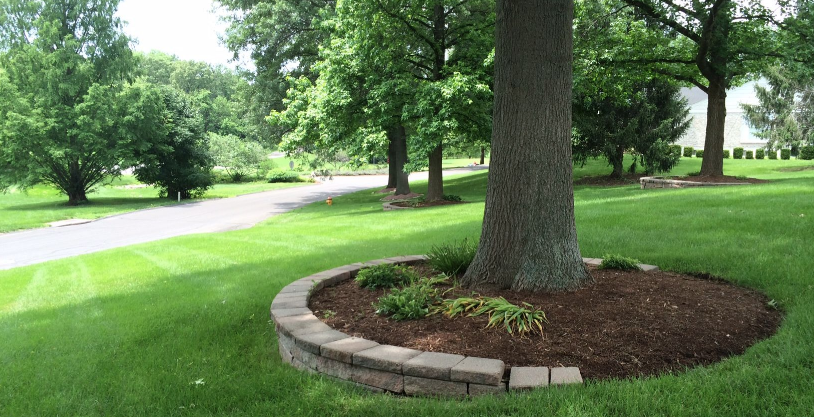
The start of school this year may not have been surrounded by the usual end-of-summer/beginning-of-fall fanfare, but signs that the seasons are advancing in their usual inexorable way are still upon us. Mid-Atlantic mornings are becoming cooler, and big box stores are breaking out the “Happy Fall, Y’All” knickknacks. And if you’re a gardener, you may be enjoying the beauty of your perennials’ third bloom—made bittersweet by the sure realization that Maryland’s first hard frost could be just weeks away.
Make sure you take some time to enjoy your garden’s late summer/early fall gifts, but also be sure that you’re planning and preparing to “tuck your yard in” for the colder weather ahead. Investing some time now to prepare your gardens for the winter not that far away will help ensure that your spring preparations go smoothly.
Focus on these five jobs as you batten down the hatches outdoors for another long, cold winter:
- Get Rid of Dead Foliage. The occasional severe summer storm can beat your garden up more than you might initially realize. Walk your property and remove any landscaping that’s either dead or well on its way. Pick up fallen branches and prune off limbs that may be hanging by a thread. While you’ve got those sheers out, cut back dead annuals, perennials, and shrubs. Get a head start on raking leaves.
- Mulch Your Trees and Plants. Just like you enjoy being wrapped in a warm fleece blanket when temperatures plummet, your plants love to be surrounded by a thick layer of mulch. Spread a few inches of shredded leaves, bark, or compost around the base of your plants and trees to insulate and enrich the soil, keep weeds down, protect roots from frost, and retain moisture. And remember: you can’t be too careful. Buying organic mulch from a home and garden store will help you avoid infecting your garden with mulch that has been contaminated with diseased plants.
- Plant New Shrubs. Fall is a great time to add new trees and shrubs to your landscape. First of all, the gardener is likely to have more time in September, October, and November to do this job. Trees and shrubs are either sold in containers or “balled and burlapped”, making planting easy. And most important of all, trees and shrubs love the warm soil and cool air of fall—which stimulates root growth and allows the plant to get established before the ground freezes. (To protect delicate shrubs from rain, snow, and ice, wrap them in burlap or, if they’re small enough, place an empty bucket over them.)
- Mow Your Lawn. Raising your mower height throughout the growing season will result in a thick, vigorous turf. By the last time you mow your lawn in the fall, you should have your mower set at right around 2–2.5 inches.
- Rejuvenate Your Lawn. Now’s the time to fix any brown patches on your lawn. Grass seed germinates well in cooler fall weather, allowing the root system to establish itself soil that is still residually warm.
Stack the deck in your favor by buying a high quality seed that has been especially developed and blended for your climate zone and conditions. You can read labels, but don’t hesitate to ask our friendly, knowledgeable staff.
Keep in mind, however, that no matter how carefully chosen your seed is, just tossing a handful of it on hard-packed ground isn’t likely to yield good results. Instead,.follow these five basic steps to a greener, healthier lawn:
- Clear away dead turf to allow your grass seed to come into direct contact with the soil where it germinates and roots best.
- Dig up and loosen the top 2–3 inches of the soil, working in compost or other organic material.
- Spread high quality grass seed and lightly scratch it into the soil so that some gets worked into the top quarter-inch of the soil with the rest at or near the surface and lightly tamp it in.
- Start new growth off strong by scattering a small amount of fertilizer specially formulated for new grass.
- Keep your newly seeded areas damp until you see new growth. Dry seeds won’t germinate at all, and if you let the soil dry out early in the growth process, it is likely to fail before it takes hold.
Taking the extra time in September, October, and November to revitalize your lawn and invigorate your landscaping will give you a head start on a spring yard and garden that will be the envy of the neighborhood.
